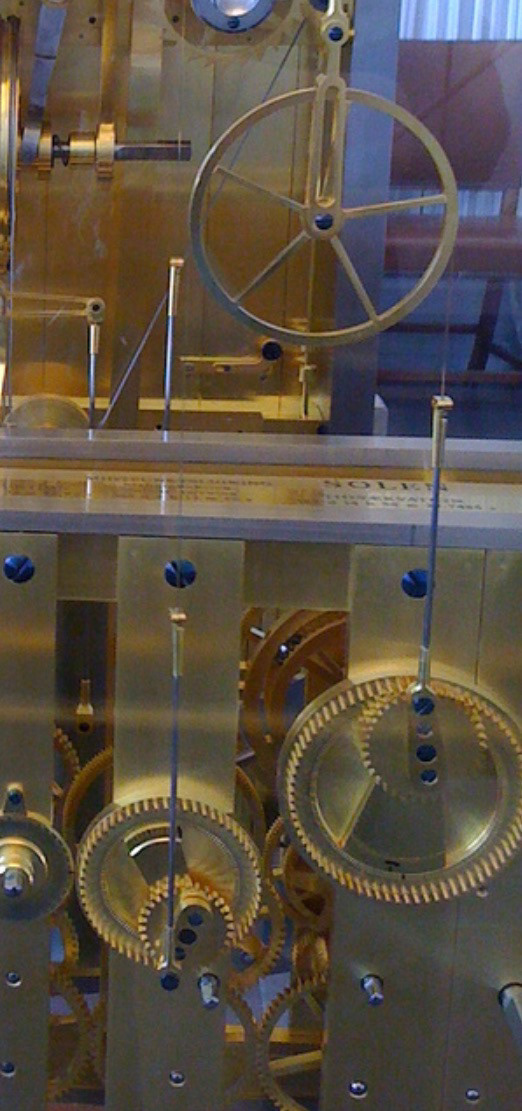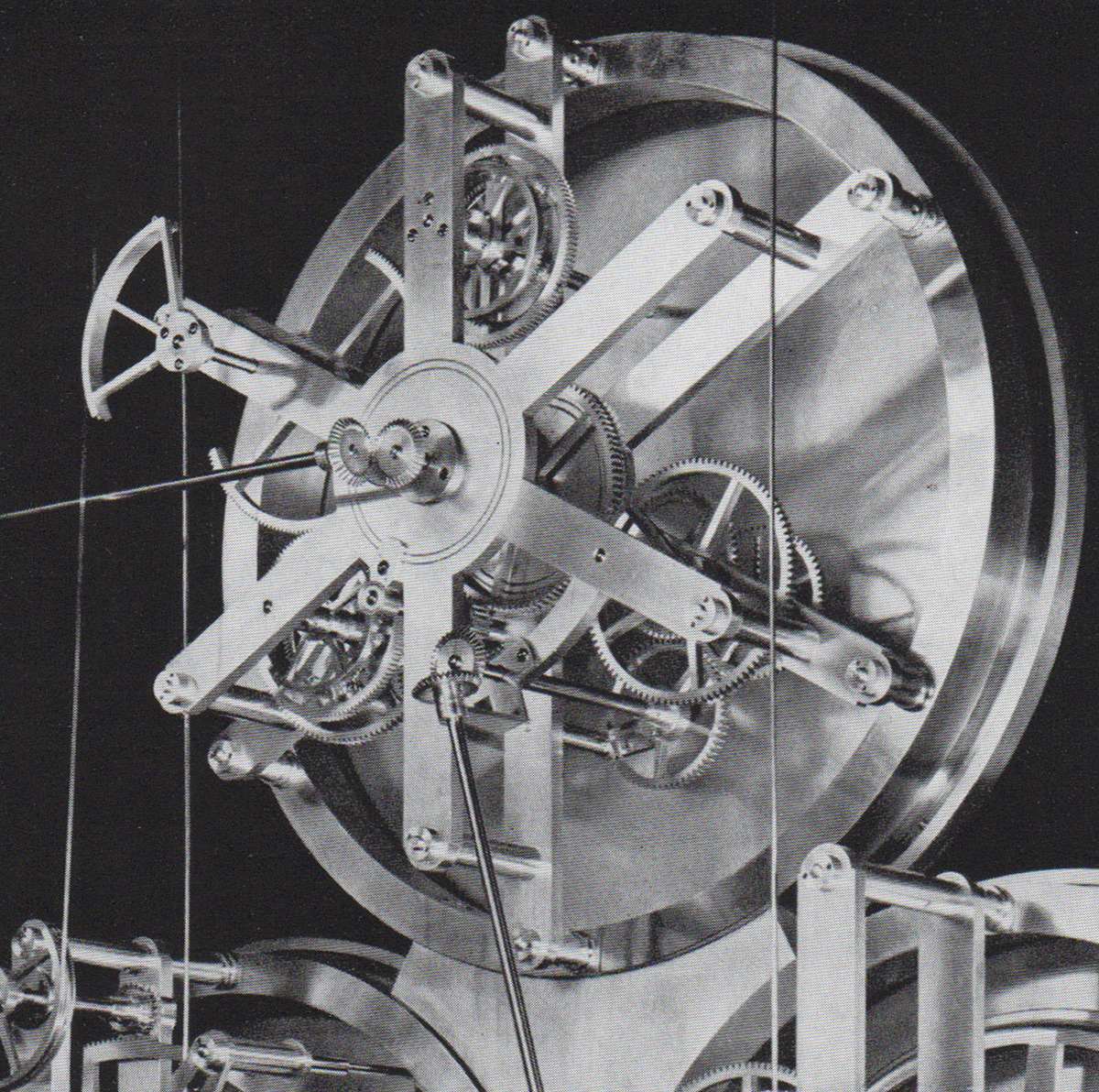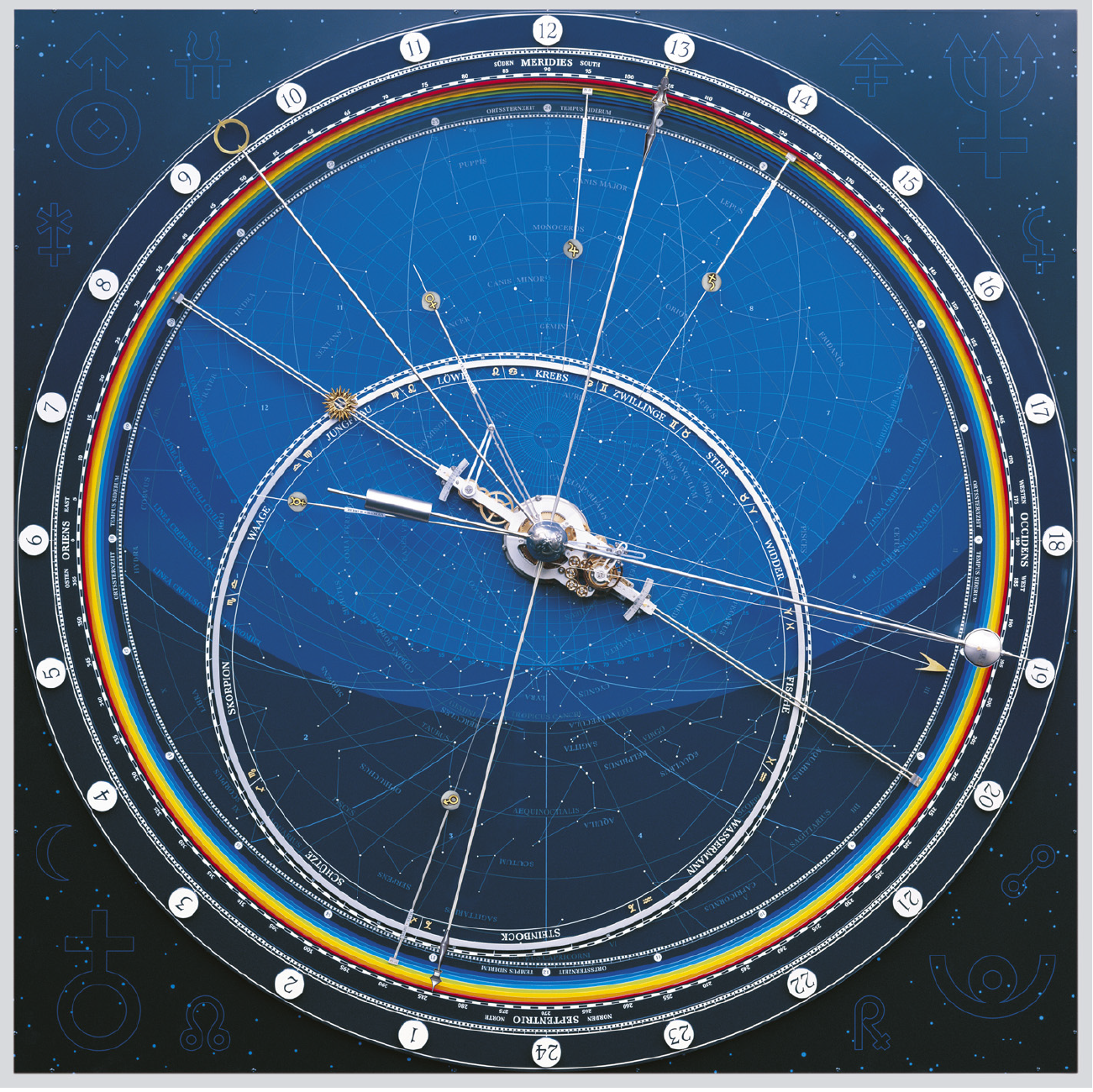Showing how the Equation of Time can be generated by one gear rotating around another.
Showing how the Equation of Time can be generated in a practical manner by 2 Tusi Couples.

Kurt Descovich - 2016 - Schwartenau Heliochronometer : Ref NASS Compendium v23(1) Mar 2016 (see also page on Moving Hour Lines Sundials) The Left end of the blue slider is fixed (except when adjusting for Daylight Savings time, The Right end is connected to the rotatable equatorial ring

Schwartenau Heliochronometer. the knob at the bottom adjusts for the year in the leap year cycle. The little pointer in the middle of the picture allows the tiny adjustment of the movement of perihelion towards the vernal equinox.
David Rittenhouse : 1732 – 1796 - Politician, Surveyor, Inventor, Mathematician Astronomer & Clockmaker

The Rittenhouse Clock in Drexel University

Face of the Clock

The Equation Face
Jean-Baptiste Schwilgué 1776-1856

Strasbourg Clock - The Equation mechanism is at the bottom right corner.Illustration from Schwilgué's own documentation.

The Clock today

The Clock's Solar & Lunar Dial. Also showing the time of sunrise and sunset.

The Solar and Lunar Computer
Jens Olsen 1872-1945
The Front of the Jens Olsen Clock. The top left face shows the Equation of Time, local time and Solar Time
Detail of Equation Clock Face. TOP - (A) Equation of Time & (B) EoT longitude corrected (these hands are fixed 9 mins 47 second apart ; the longitude difference between CET's 15° East and Copenhagen. LEFT Local Mean Time. RIGHT True Solar Time. The clock was not running when this photo was taken (see the vast difference between local and true solar time).
The Rear of the Jens Olsen Clock. The rectangular section (bottom centre) generated the 5 sine components of the lunar motion and, at the right , the 2 main & 1 small sine components of the Equation of Time. The connection between the signal generation and the Dial (now top right) is via a steel ribbon.

Moon & Equation Works

The 2 Tusi Couples
Jan Olsen's own diagram showing the generation of Tropical and Anomalistic year rotations
Detail of the 2 Tusi Couples and the 3rd order correction

Detail of Rear of Equation Face : Whole works - top left is the quarter-round sector with steel ribbon from Equation mechanism and to left centre, the connection rod to main pendulum mean time mechanism.

Further Detail
Prof. Dr.-Ing. Hans Scheurenbrand

Festo Harmonices Mundi Astronomical Face

Festo Harmonices Mundi, showing Solar Hand and Not Indicator

Festo Harmonices Mundi Auxiliary Dials showing summer & winter Civil Time (left) and Solar Time & the Equation of Time (right) with gearing for the Ellipticity effect driven by the anomalistic year gearing (bottom left) and the gearing for the Obliquity effect driven by the tropical year gearing (bottom right)

Festo Harmonices Mundi EoT Gearing for anomalistic and tropical years and the summation with differentials to produce the Equation

Prototype 1 - Solar Noon Correction Lens and the 10,000 years EoT Cam

Prototype 1 - 10,000 year EoT Cam Replica

Model of Prototype 2 - showing the scale of Project.

Model of Prototype 2 - showing the scale of Project.
